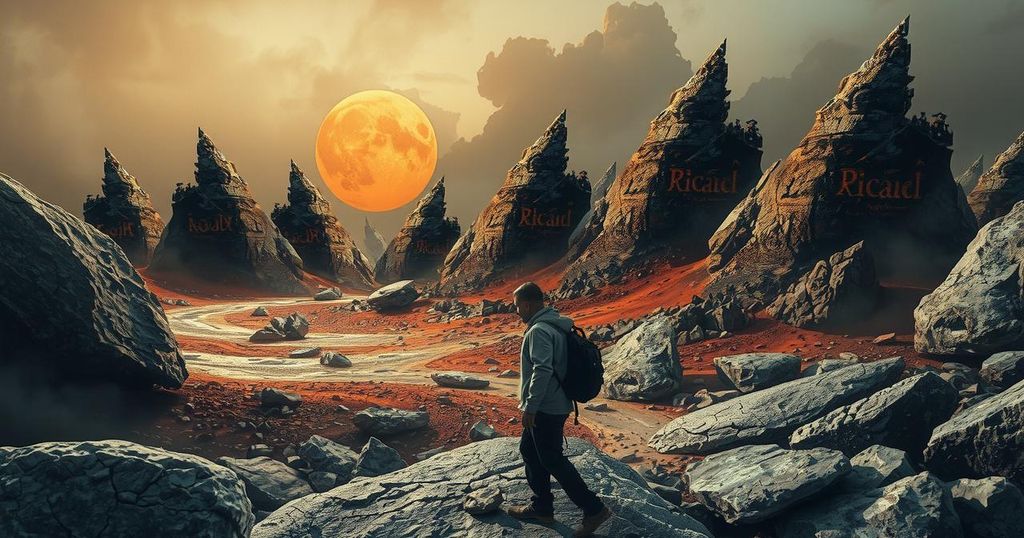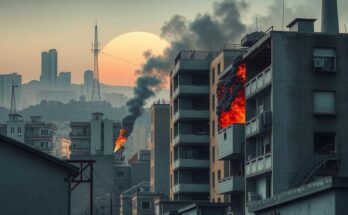Recent violence in DR Congo has seen a rebel alliance, notably the M23, capture Goma, raising concerns over humanitarian crises in the mineral-rich region. The Congolese government unilaterally severed ties with Rwanda amidst allegations of support to M23. Casualties mount as fighting continues, impacting civilians and peacekeepers. Regional leaders convene to seek solutions, emphasizing the need for lasting diplomatic resolutions to prevent further escalation.
In recent developments in the Democratic Republic of Congo (DR Congo), violence has erupted as a rebel alliance has reportedly captured Goma, the largest city in the eastern region, amidst fierce resistance from government troops. This takeover by the Alliance Fleuve Congo (AFC), which includes the M23 armed group, has raised significant concerns regarding the ongoing humanitarian crisis as the region is pivotal for the extraction of valuable minerals essential for electronics. Victor Tesongo, the AFC spokesperson, confirmed the fall of Goma, attributing it to prior captures of nearby towns.
The Congolese government, while not officially confirming the takeover, has acknowledged the rebels’ presence in Goma and responded by cutting diplomatic ties with Rwanda, accusing it of supporting the rebels. Tensions have escalated, with gunfights reported at Goma’s airport after control was seized by M23. Additionally, violence has surged, resulting in numerous casualties among peacekeepers and civilians.
The humanitarian situation is critical as hospitals are overwhelmed with injured civilians, including children, as reports indicate rampant violence against residents. The chaos continues to escalate, with opposition to the M23 leading to protests in the national capital, Kinshasa, where embassies, including France’s, were attacked. The fear of further conflict with Rwandan forces is palpable, as reports indicate exchanges of gunfire along the border.
The M23 group’s advancement is marked by their strategic interests, including resources like coltan, which is vital for mobile phone production. The group’s claims of humanitarian motivations contrast with reports of significant profits from resource extraction, which sustain their operations. The UN has indicated that the conflict is fueled by competition for these valuable resources, which has intensified violence in the eastern regions of the DRC.
Goma holds considerable significance as it serves as a strategic urban center and a transport hub with a substantial population. Control over Goma symbolizes M23’s broader ambitions in the eastern DRC, given its historical context of being captured briefly before in 2012. Analysts highlight the implications of Goma falling to the M23 as detrimental to regional stability and humanitarian access.
Rwanda’s involvement has drawn international scrutiny, with UN experts estimating Rwandan troops’ numbers as greater than those of the M23. The Rwandan government claims its support seeks to secure its borders amidst escalating tensions. Rwandan officials have indicated that past cooperation attempts with the DRC government have been futile, creating a volatile situation that risks further escalatory measures.
As regional leaders gather to address the ongoing crisis, previous resolutions have often failed to deliver lasting peace. Political analysts stress that enduring solutions require establishing a secure DRC capable of managing its economic resources, advocating for comprehensive dialogue to remedy the persistent security dilemmas that plague eastern Congo.
The Democratic Republic of Congo has faced protracted conflict stemming from centuries of instability, often linked to its rich mineral resources. The M23 group has re-emerged in recent years, claiming it seeks to protect minority Tutsi communities amid accusations of its ties to Rwanda. Tensions have risen significantly since M23 resumed its offensive against government forces in 2022, leading to a humanitarian crisis marked by civilian displacement and resource exploitation. Understanding the historical context and the complex interplay between local and regional dynamics is essential to grasping the ongoing conflict.
The situation in Goma represents a critical juncture in the ongoing conflict in the eastern DRC, highlighted by the M23’s territorial gains and worsening humanitarian conditions. The involvement of external actors, particularly Rwanda, complicates diplomatic efforts towards resolution. Regional leaders are urged to engage in meaningful dialogue to mitigate a spiraling crisis, emphasizing the need for strategies that address security and economic stability to forge a lasting peace. Without a concerted effort to reconcile these issues, the cycle of violence is likely to persist.
Original Source: www.cnn.com




